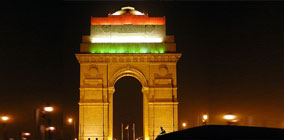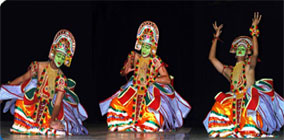North India & Nepal
Duration: 09 Nights / 10 Days
Places Covered: Delhi - Agra - Fatehpur Sikri -Jaipur - Delhi - Kathmandu - Delhi
Day 01 - Arrival in Delhi
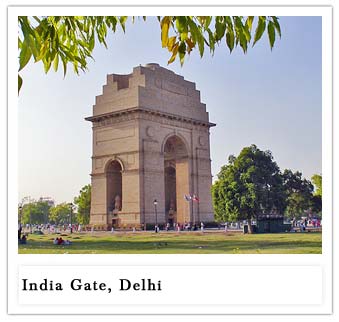
Delhi, India's capital has seen great empires rise and fall around it for millennia, with each new batch of rulers building over the works of their predecessors. As a result, the city abounds in monuments and ruins of stunning diversity. The seat of the world's largest democracy, it also boasts of magnificent symbols of government that pay architectural tribute to the ideals of self-rule and democracy. These co-exist side by side with wide multi-lane motorways, shopping malls, fast cars and ultramodern steel-glass office complexes that characterise any large 21st century metropolis.
Overnight will be in Delhi.
Day 02: Sightseeing around Delhi
After breakfast at the hotel, proceed for guided tour of Old Delhi.
Raj Ghat is the famous memorial to Mahatma Gandhi. The shrine bears testimony to the simplicity of the man who changed the world with the power of ideas. A simple black stone structure with an eternal flame burning at one end.
The majestic Red Fort was commissioned by the Mughal Emperor Shah Jahan in 1639, and remained seat of the empire for the next two centuries. Today, the Prime Minister of the India delivers his Independence Day speech to the nation from the ramparts of this red sandstone structure.
To truly experience the buzz of the old markets and narrow, winding medieval alleys of old Delhi, we recommend a rickshaw ride through the city.
Jama Masjid is one of Asia's largest mosques. We shall view this magnificent structure from outside, its lofty and highly ornate domes and minarets reminiscent of a scene from the Arabian Nights.
Proceed for sightseeing in New Delhi.
New Delhi was built by the British in the 1930s as their imperial capital. Majestic government and administrative buildings line the wide, tree-lined avenues of what is also known as Lutyen's Delhi after Sir Edwin Lutyens who was commissioned to design the city in 1911.
Start at India Gate, the red sandstone arch erected in memory of Indian and British soldiers who laid down their lives in World War I. Close by are the majestic Parliament House, the seat of the world's largest democracy and the Rastrapathi Bhawan, the Indian President's official residence. Inside are the famed Mughal Gardens with its ornate fountains and manicured lawns. Mughal Gardens are open to the public during spring.
The day's tour ends at the Qutub Minar. Built in 1193 by Qutubuddin Aibak, a slave general, it is the tallest stone tower in India and marks the site of the country's first Muslim kingdom. The iron tower in a square opposite is unique in that it never rusts, although it has been exposed to the elements for centuries.
If time permits, we shall visit the lotus-shaped Bahai temple south of Delhi. An ideal place for meditation, this Bahai House of worship is open to people of all religion.
Overnight will be at Delhi.
Day 03: Delhi to Agra by road, visit Sikandra en route
After breakfast, proceed to Sikandra in a spacious, comfortable Our approved vehicle.
A beautifully maintained tree-lined monument at Sikandra marks the grave of the illustrious Akbar the Great. A great believer in harmony and equality of all religions, this visionary Mughal Emperor created Din-i Ilahi, a unique religion that combines the fundamentals of Islam, Hindusim, Buddhism and Christianity. His memorial imbibes architectural motifs of all the faiths that inspired him.
Proceed to Agra.
The Mughal capital of Agra on the banks of the Yamuna River is a bustling town teeming with narrow, winding alleyways that hark back to an era gone by. Dotted by magnificent monuments including UNESCO World Heritage SIte Taj Mahal, the city is a dazzling contrast of red sandstone and white marble structures.
Day 04: Sightseeing in Agra
Proceed for day sightseeing of Agra after breakfast.
Standing across the river from the Taj, the majestic red sandstone structure of Agra Fort was erected in 1565 by Mughal Emperor Akbar the great. Little did he know that the same fort would later serve as prison for his grandson Emperor Shah Jahan in the end of his days. From his prison perch of Musamman Burj, an exquisite octagonal marble tower atop the fort, Shah Jahan would spend his last days looking out longingly at the Taj.
Itmad-ud-Daulah is perhaps the Mughal Empire's best kept secret. Empress Nur Jehan, wife of Jehangir, son of Akbar, commissioned the structure as a memorial to her father. Mistakenly called Baby Taj, Itmad-ud-Daulah in fact is decades older than the Taj, and may have served as its design blueprint.
Later in the hotel, enjoy a cultural performance that narrates the Taj Mahal's romantic history through the medium of modern dance.
Overnight at Agra.
Day 05: Taj Mahal at dawn, Agra to Jaipur by road, visit Fatehpur Sikri and Abhaneri en route
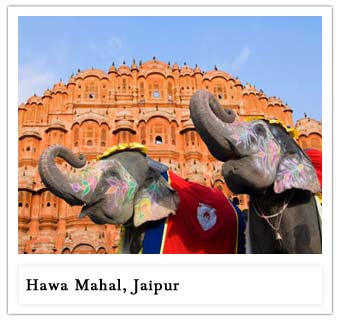
Built by Mughal Emperor Shah Jahan as a memorial to his queen Mumtaz Mahal and designed by Persian architect Ustad, the magnificent Taj Mahal is one of the seven wonders of the world. A massive white marble structure so delicate that it appears to float in the air, the Taj is otherworldly in its beauty and is best viewed in moonlight or at dawn and dusk. The close-up view reveals breathtakingly intricate inlay work carved into the marble, and bears eloquent testimony to the triump of Mughal art, culture and architecture at its peak. No holiday in India is complete without the Taj.
Return to the hotel for breakfast.
Later, proceed to Jaipur en route visiting Fatehpur Sikri and Abhaneri.
Fatehpur Sikri, or the "City of Victory", built by Emperor Akbar in 1569 in honour of sufi saint Salim Chishti was the capital of the Mughals for 14 years. The white marble Tomb of the Salim Chisti with its intricately carved marble screens occupies pride of place in the central courtyard of the structure.
Attractions include the colossal Buland Darwaza, a victory gate built to mark the conquest of Gujarat by Emperor Akbar, the Diwan-i-Aam where the emperor held his legendary hearings with the general public and the Diwan-i-Khas where he held private consultation with his nine ministers, or as he called them, his navaratna or nine gems.
Fatehpur Sikri also houses the palace of Jodhabai, Akbar's Hindu wife, and the house of the legendary Birbal - Akbar's Hindu minister and one of the navaratnas - the tales of whose extraordinary wit and wisdom are the stuff of popular culture in India, inspiring countless comic books and children's animation TV shows.
The largest and the most spectacular among Abhneri's step-wells is Chand Baori, a yawning concrete spiral, with narrow steps along its ancient walls leading down into the vertiginous depths below. Beneath are three tunnels that lead to the surface some 20 kilometers away from the step well and are believed to have been used as escape routes in case of enemy attack.
According to legend, the original Harshat Mata Temple dating back to the 8th century is said to have been made entire of blue saphhire. The temple was razed down to the ground by the Mughals, yet the ruins give the visitor a fair idea of the structures original grandeur. Don't miss the stone carvings depicting deities from the Hindu pantheon.
Guests may consider stopping at the heritage resort nearby for lunch. If you are visiting during April or May, do drop in on the annual fair near the temple.
Continue to Jaipur.
Jaipur, also known as the 'Pink City' from the facelift it received in 1853 to celebrate a visit by Prince Albert, is dotted with havelis (traditional mansions), bazaars, opulent palaces and rugged majestic forts that showcase the glorious past of its rulers, the Rajputs.
The Rajput princes were fierce warriors some of whom declared loyalty to the invading Mughals and proved to be formidable allies of the empire. Among them was King Jai Singh II, whom the Mughals gave the title Sawai Maharaja, or "King and a quarter". Jaipur gets its name from this valiant king.
Overnight stay will be in Jaipur.
Day 06 : Sightseeing in Jaipur
Breakfast will be served at hotel. Proceed for excursion and elephant ride to Amber Fort.
Situated on the top of a hill, the magnificent Amber Fort Palace offers a panoramic view of the old city. Established in 1592, its rugged exteriors believe the delicate architecture inside, a rare fusion of traditional Rajasthani and Islamic styles. Reach the fort the old fashioned way, atop a ceremonial elephant along a cobbled path up that opens into several havelis, step wells, courtyards and temples. Visit Sheesh Mahal or chamber of mirrors, Jas Mandir with its ornate ceilings and latticework and the stunning Shila Devi temple with its intricately carved silver door.
Proceed for sightseeing of the city.
The sprawling City Palace has been home to the rulers of Jaipur since the 18th century. The architecture of the palace is a blend of traditional Rajasthani and Mughal styles. The City palace Museum is located here and houses various items from Jaipur's princely and warrior past.
The scientific-minded King Jai Singh II, an astronomy enthusiast, commissioned five observatories named Jantar Mantar around West Central India in the early 1700s. The one in Jaipur is the largest and the best preserved. The massive architectural instruments are constructed out of local stone and marble some of which are still in use. We shall walk through and explore this surreal maze of giant geometric objects.
The exquisite outer facade of Hawa Mahal, the "Palace of Winds," resembles a manmade honeycomb and is one of Jaipur's most iconic and oft photographed sights. Designed to facilitate maximum air circulation and cross ventilation, the five-storied Hawa Mahal is made of lime and mortar, and decorated with impossible intricate trelliswork. From the privacy of its ornate jharokhas (traditional Rajasthani windows), the ladies of the court could gaze out at life in the streets below.
Overnight at Jaipur.
Day 07: Jaipur to Delhi by road, fly to Kathmandu
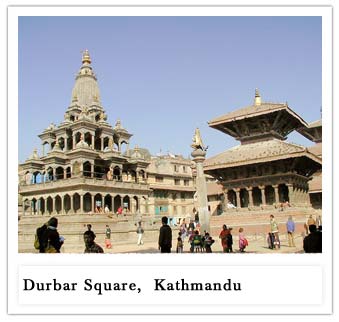
The fertile Kathmandu Valley has always been a coveted prize for the Himalayan dynasties, changing hands from the Lichchhavis to the Mallas and finally to the Shah Kings who ruled initially as absolute and later as constitutional monarchs of Nepal until as late as 2006. Nestled between the southern low lying Mahabharat Range and the dizzying northern snow peaks of the Great Himalaya Range, Kathmandu Valley is a fertile saucer-shaped tract of land of unbelievable richness, both literal as well as figurative, with a dazzling cultural tradition of art, music and architecture. The pagoda design, ubiquitous in Asia, is Nepal's cultural legacy to the world, its blueprint carried to the Chinese Emperor's Court in the 13th Century by Newari virtuoso architect Arniko. Each of the three cities of Kathmandu Valley - Kathmandu, Bhaktapur and Patan - are treasure troves of sculptures, woodwork, palaces, temples and stupas and are home to seven UNESCO World Heritage Sites.
The capital of modern Nepal, Kathmandu City evolved around a single wooden structure used as a rest stop by travelers plying the ancient trade route between India and Tibet. The wooden pavilion or kastha mandap that lends the city its name still stands in Kathmandu's expansive Durbar Square. A prominent destination on the hippy trail, Kathmandu has been highly popular with tourists for decades and on its busy streets, buzzing cafés, pizzerias, pubs, book shops, sushi bars, music stores and camera sellers jostle for space with exotic centuries-old temples, residential houses and stupas. As a gateway to the great Himalayan peaks of Everest, Annapurna and Kanchenjunga, Kathmandu is one of the world's most important mountaineering hubs and it's common to, before climbing season, to run into legends of the mountaineering world across the table from you in a coffee shop.
Relax at the hotel. Overnight will be at Kathmandu.
Day 08: Sightseeing in Kathmandu
Pasupatinath is one of the holiest Hindu shrines in the world and part of the Panchkedar, the five holiest temples to Shiva. The majestic two tiered pagoda structure of the temple is embellished with gold and silver. Shiva's bull, a six feet tall black stone Nandi guards the entrance which is restricted to Hindus only, although the goings-on in the temple can be observed quite clearly from the vantage point across the Bagmati River.
On the outskirts of Kathmandu, the stupendous Boudhanath is the largest stupa in the world. There is a maelstrom of activity around the stupa at all times of day. Devotees walk around it, children play on it, curio stores blare Buddhist chants set to electronica, ceremonial drums beat in nearby monasteries and the heady smell of incense and butter lamps hand heavy in the air. Above them all, the stupa's giant Buddha eyes keep watch.
Visit the Kathmandu Durbar Square in the afternoon.
Kathmandu Durbar Square in the center of the city, has been the center of Nepali social, cultural and political life for centuries. The entrance to the Royal Palace is through the ornate Hanuman Dhoka (Hanuman Gate) which gives the palace its colloquial name of Hanuman Dhoka Royal Palace.
The Durbar square itself is dotted with ancient structures, some following the pagoda structure, others in the traditional Hindu Shikhara form. Of note are the giant 16th Century Taleju Temple, the pagoda style Jagannath Temple and the Shikhara style Krishna Temple. Krishna Temples all over the valley can be identified by the stone figure of a praying Garuda (the half-man half-gryphon mount of Krishna) outside the entrance.
Across from the Taleju Temple, stands the fearsome statue of the giant Kal Bhairav. The statue was found abandoned in a paddy field outside the city during the Malla era, and little else is known of its origin. The most fearsome figure in the square however is the Svet Bhairav. So fierce is this vengeful god that his face is covered every day of the year but a handful, when he wakes to have his hunger slaked by copious animal sacrifices.
Later in the evening, enjoy dinner over a Nepali cultural programme.
Overnight at Katmandu.
Day 09: Sightseeing in Bhaktapur and Patan
Breakfast will be served at the hotel. Proceed to Bhaktapur and Patan for sightseeing.
Bhaktapur, the "City of Devotees" stands on a hilltop a few miles east of Kathmandu. One of the four Malla Era capitals of Kathmandu Valley, Bhaktapur retains much of its medieval charm and way of living and is a UNESCO World Heritage Site.
A treat for the eyes, Bhaktapur is full to the brim with exquisite shrines, palaces, sculptures, temples, columns and lakes, with practically every visible square inch of the city teeming with elaborate and intricate stone- or woodwork. Fittingly, Bhaktapur served as the backdrop for much of filmmaker Bernardo Bertolucci's stunning "Little Buddha."
The magnificent 100 feet tall five-storied pagoda structure of the Nyatapola Temple towers over the Bhaktapur Town Square. Sheer steps lead up the structure to the area housing the deity. Giant stone guardians guard the staircase at every level. The view of the town square and surrounding hills from atop the staircase is spectacular.
The stunning Bhaktapur Durbar Square is an eye-popping congregation of temples both in pagoda and the traditional Indian Shikhara style, statues, sculptures and engravings centered around a palace with fifty-five stunningly intricate latticework windows.
In the evening, you are free to shop or explore the city on your own. Overnight will be at Kathmandu.
Day 10: Kathmandu to Delhi by air, tour ends
Breakfast will be at the hotel.
Take a walk through the popular Thamel area and enjoy the carnival atmosphere.
Later, proceed to the airport for your flight to Delhi. Transfer to New Delhi International Airport for your flight home.

| Bhutan Tour | ||||||||||
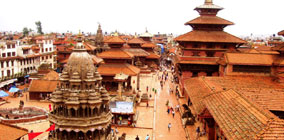
|
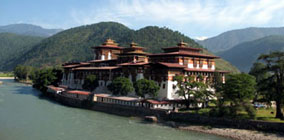
|
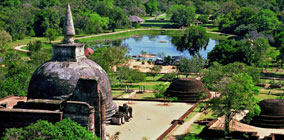
|
Vacaciones con encanto
| » El triangulo de or 7 días | » Reflejos de Rajasthan con Varanasi y Khajuraho | » Viaje a los majestuosos templos y palacios de la India |
| » Pintoresco Rajsthan Con El Taj Mahal | » India Clásica Con Nepal | » Arquitectura, turismo en la Ciudad Rosa y relax en Goa |
| » Viaje a la Tierra del Tigre | » Viajar a Varanasi, India | » India Fascinante y la Belleza Natural de Nepal y Tibet |
| »India Sur con Backwaters | »Itinerario India Sur | » Templos y patrimonio de la cultura de India Sur |
Art of Living
| » The Great Taj Mahal Tour | » El triangulo de or 7 días | » Reflejos de Rajasthan con Varanasi y Khajuraho |
| » North India Highlights Tour |


